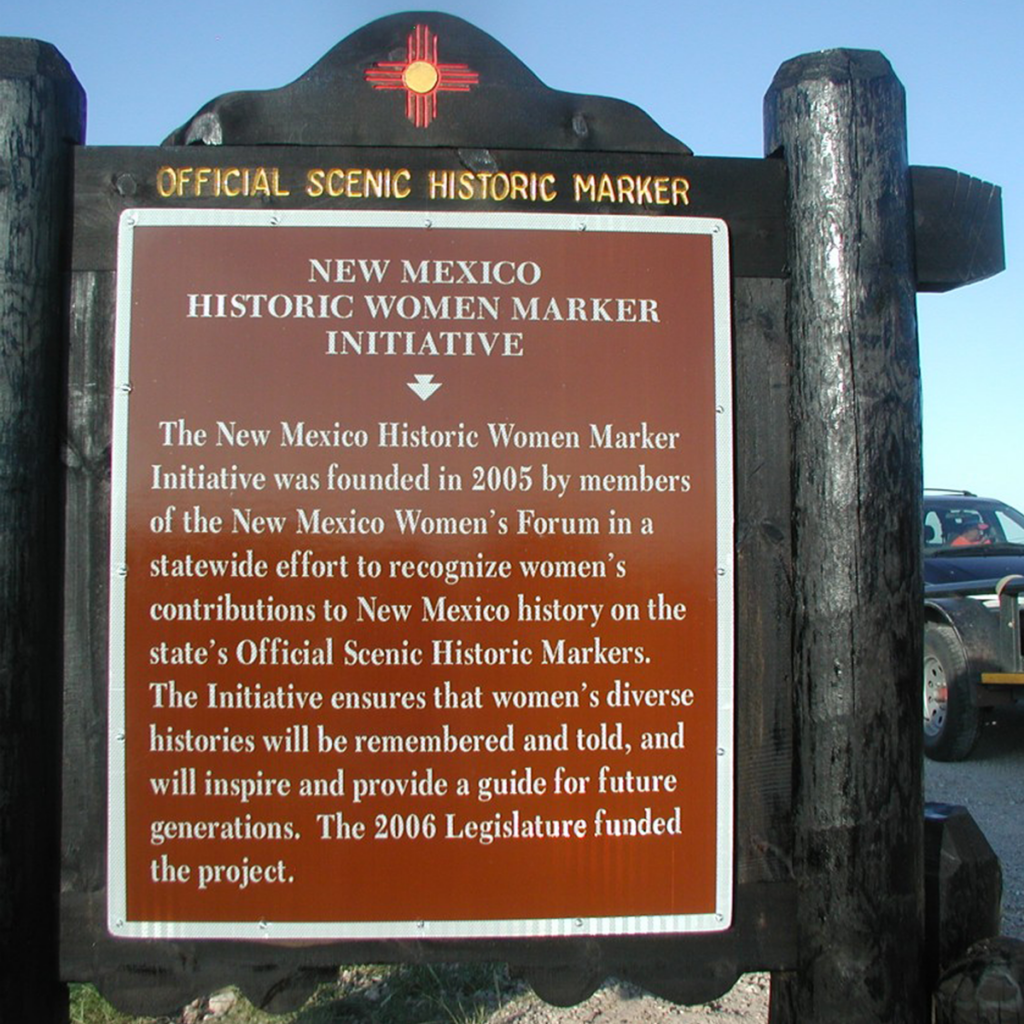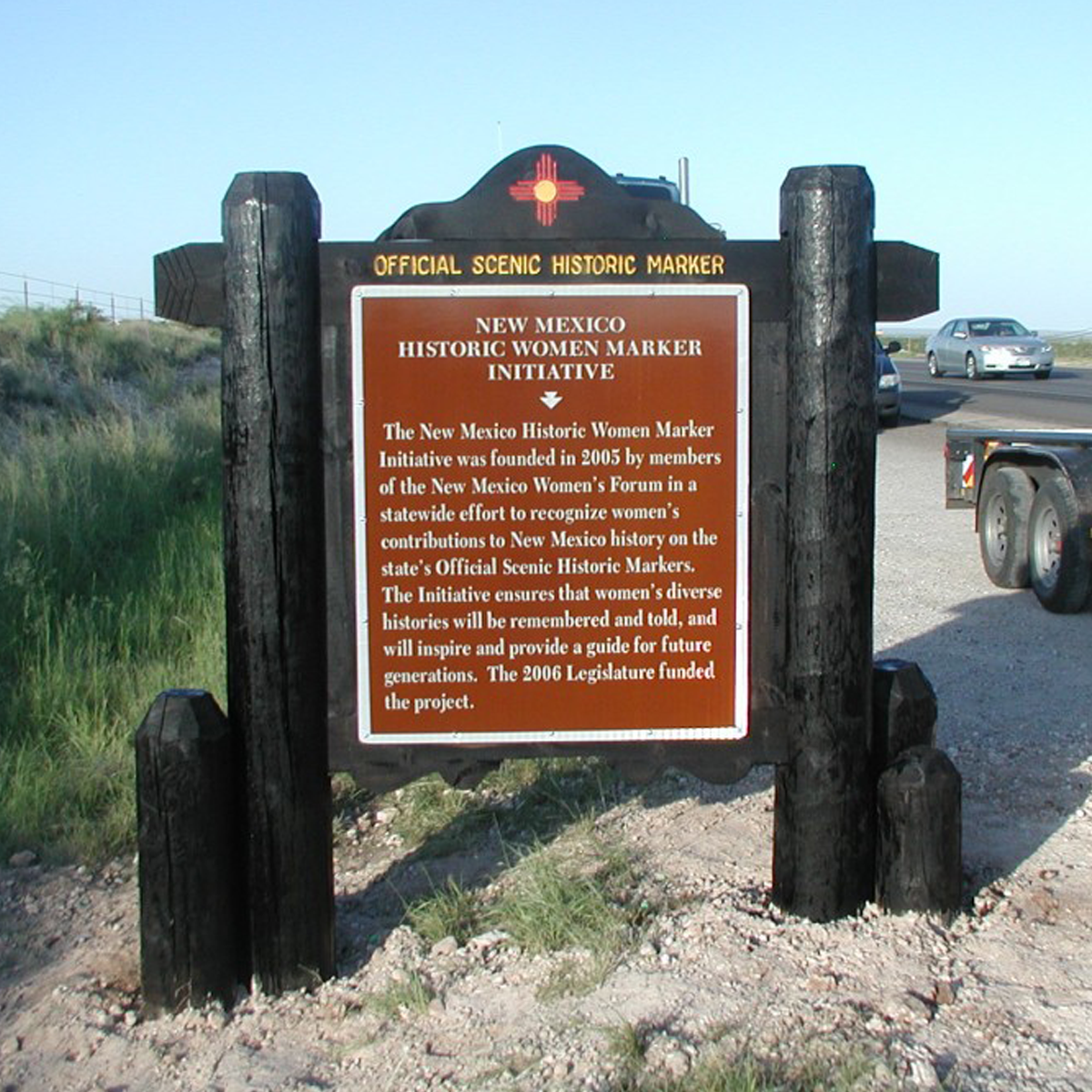Josephine Cox “Grandma” Anderson historic marker.
Josephine Cox “Grandma” Anderson
1849 - 1941
Eddy County
An artist and nurse, she helped shape the town of Carlsbad from its early beginnings, painting a mural for the church altar and leading efforts to care for the sick in tents along the Pecos River. A humanitarian, nurse, and teacher, she earned many fond nicknames, including “The Angel of the Pecos.”
Josephine Cox Anderson was a lifelong artist who painted until she lost her eyesight late in life. She was also a nurse whose courageous work and kindness earned her many fond nicknames, including “The Angel of the Valley,” “The Angel of the Pecos,” and “The Angel of Mercy.”
Early in life, Anderson and her husband, a contractor, traveled throughout the southwest pursuing mining ventures. When her husband received an invitation from Charles B. Eddy to help lay out the new town of Eddy (today’s Carlsbad), they moved to what would become their permanent home. When they arrived in 1888, they found a collection of many bars, very few permanent structures, mud streets, and a tent city by the banks of the Pecos River. The couple became active in the Grace Episcopal Church and she painted a large canvas entitled Mary at the Tomb to be placed behind the altar. This painting, along with a portrait of her son Frank who died as a child in 1907, were donated to the Carlsbad Museum and Art Center.
While her husband kept busy designing the town and eventually becoming its mayor, Mrs. Anderson took up her nursing vocation and devoted her life to ministering to the ills and needs of others because, “It is just my part of the Lord’s work: it was what he wanted me to do.”
In the early days, the town had one doctor. He supplied Mrs. Anderson with medicine and instructions on how it should be administered. When the first flu epidemic hit the area before the turn of the century, she was asked to help with the sick in the tent city. She hitched up her buggy and drove there, finding many people dangerously ill with what was then called the “grippe.” Every day during the crises she loaded her buggy with food that she and other townswomen had prepared and took it to the sick.
Not only was her presence among the sick dangerous to her health, the place itself was dangerous for a lady without escort. Almost everyone carried a gun and none were slow to use it at the slightest provocation. She did not think about danger because, “We were too busy thinking of someone else.”
Her husband built her a twenty-six-room sanatorium when their own house became overcrowded with patients. During the flu epidemic of 1918, she cared for sixty patients–not one died. With the help of her daughter, she continued to operate the sanatorium for twenty years. Later in life, she also helped solicit funds for the construction of the Carlsbad hospital and helped supervise its initial operation.
The sanatorium became her residence until her death in 1941, 17 years after the death of her husband. Through her art and work, “Grandma” became one of Carlsbad’s most renowned citizens. She was a humanitarian, nurse, and teacher who earned the nickname “The Angel of the Pecos.”
Sources:
Virginia Dodier. Carlsbad Museum and Art Center Daily Current-Argus, 6/9/1935.
Martha Jane Dowell. Daily Current-Argus, 6/13/1939.
Directions:
Josephine Cox “Grandma” Anderson
Eddy County
Community leader | Healer |
Statehood (1912 - present) | Territorial Period (1848 - 1912) |
Southeast








